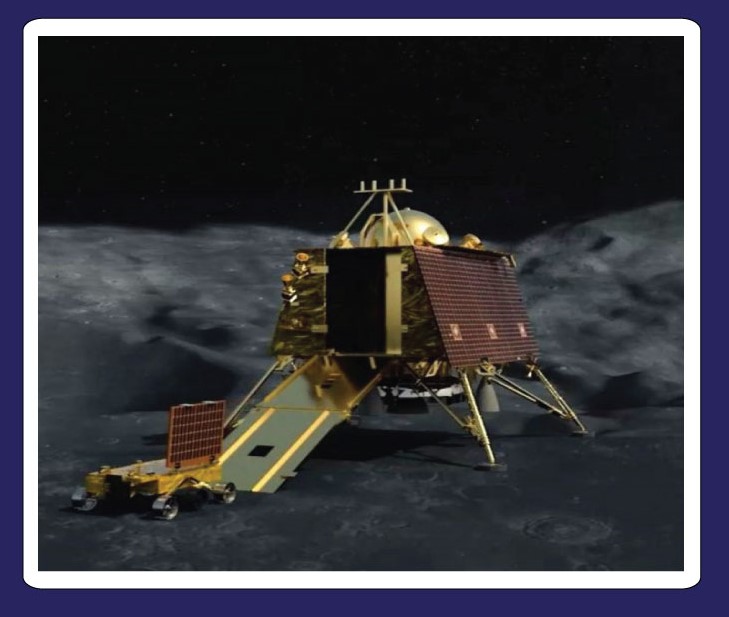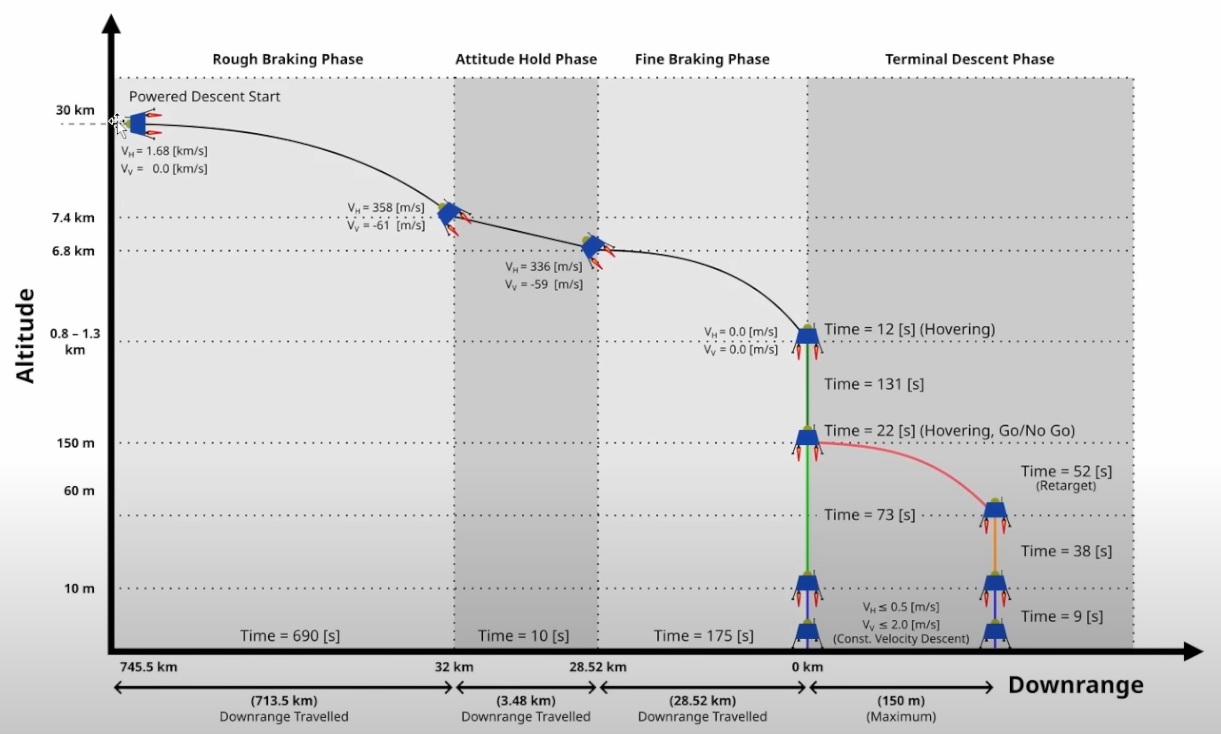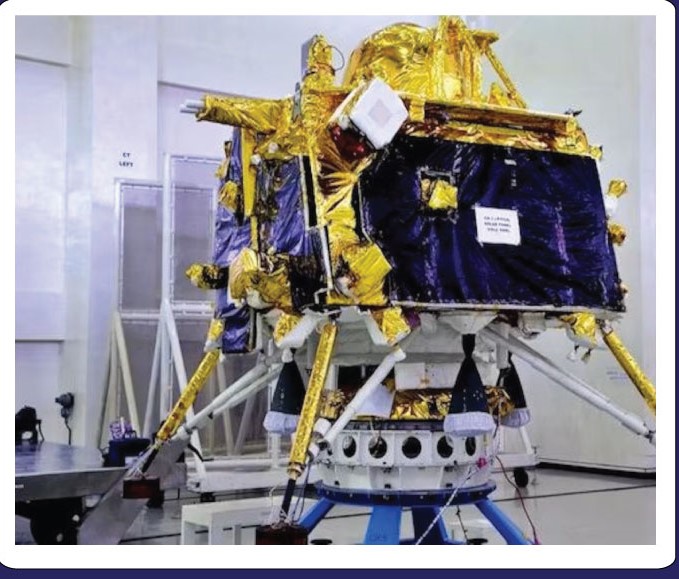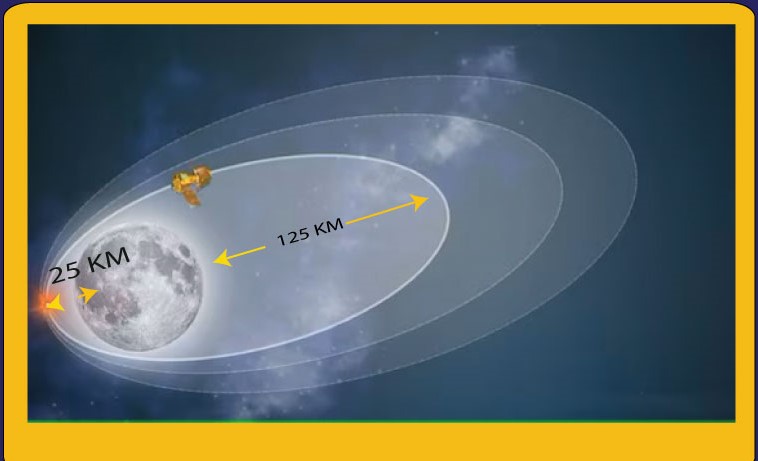.jpeg)
Today, on 23rd August, from 5:23 in the evening, Chandrayan 3 soft landing process will be broadcast on TV, Not India but the whole world has been waiting since 14th July:
That is the soft landing of Chandrayaan 3 on the moon.

Chandrayaan 3 is going to land on the moon's place, where big superpower Russia has also failed to send its lander, that place is the south pole of the moon.
Recently, on August 20, the lander Luna 25 sent by Russia failed to land on the south pole of the moon and crashed into the moon. Luna 25 was supposed to land on the Moon's South Pole before Chandrayaan 3 and now due to its failure the whole world is now only and only on Chandrayaan 3, whether Will a soft landing happen?
So what is soft landing which is being told as the most complex part of this mission?
The soft landing will be a heart-stopping 17-minute moment when Chandrayaan 3 will attempt to land on the lunar surface from 25 kilometers above the moon. in the process
The speed of the lander is reduced by giving thrust so that the lander can easily land on the surface without any damage.
The soft landing was the process that Chandrayaan 2 failed to complete, after which ISRO scientists did not give up after four years launched Chandrayaan 3, carrying forward the same Chandrayaan 2 mission.

This stage will start from a height of 30 km.
At this time, the lander will only have a horizontal speed of 1.68 km/s, which will be reduced to 358 m/s at the end of the stage, and a vertical speed of 0 to 61 m/s. During this, the height will decrease from 30 km to 7.4 km. It will take a total of 690 seconds to complete this stage and our lander will cover a total horizontal distance of 713.5 km. At the end of the stage, the position of the lander will come at a slight angle to the horizontal. This was the same phase in which our Chandrayaan 2 landing failed.
This is the shortest phase of a soft landing, which will be of 10 seconds. In this phase, the lander will compare the already given data and current data with the help of the AI technique to see if the landing path is correct or not.
This is the most crucial phase of a soft landing.
After this phase, the horizontal speed and vertical speed of the lander will be zero. The height of the lander will be around 800 meters to 1300 meters above the moon.
It means that at an altitude of 1300 meters, our lander will be absolutely stable.
Then after hovering for 12 seconds and checking all the data
In the next 131 seconds, Vikram Lander will come to a height of 150 meters from 800 meters.
Then the hazard detection camera detects whether there is any hazardous element like a stone or a crater on the landing place.
If everything is fine then it will do a Go-No-Go test which will be an automatic process that will be performed by a self-computer installed in Vikram Lander.
If the result of the test is positive, then Vikram Lander will land on the moon in next 73 seconds and if the result of the test is negative, then it will go 150 meters horizontally away from the landing point in 52 seconds and then land.
This is the reserve phase when the lander will be at an altitude of 150 and if any hazard is found at the landing point, it will shift its horizontal position by 150 meters and then land on the moon.
what is Chandrayaan 3 mission? Its purpose and what has happened so far
Chandrayaan-3 is the follow-up mission of ISRO's Chandrayaan-2 which was launched by LVM3 rocket on 14 July 2023 from Satish Dhawan Space Center Sri Harikota Tirupati district in Andhra Pradesh.
Soft landing on the Moon's South Pole after that demonstrates Rover roving on the moon and studying the present particles, environment, magnetic field, etc, and sending it to Earth.
First of all, it will revolve around the earth, then by maneuvering it, it will revolve in the orbit of the moon, then with the deboosting maneuver technique, its orbit will be changed near to the moon, so that a soft landing can be done.

Chandrayaan 3 is carrying two payloads one Vikram Lander to make a soft landing on the Moon and Pragyan Rover to explore the Moon's South Pole by rover after landing.
After 3 times deboosting processes, Vikram Lander is changing its orbit and orbiting 25 km above the moon, which will land on the moon on August 23, 2023, around 18:04 Hrs

Currently, Vikram Lander is moving in an orbit of 25 km minimum and 125 km maximum distance from the moon.
The first landing attempt of soft landing will start at around 06:08 minutes Indian time. This process will last for about 17 minutes, if any complex situation occurs during landing, the landing process will be stopped immediately.
And again on August 27, the second landing will be attempted.
After the Chandrayaan 2 landing failure and the recent failure of Russia's Moon Mission Luna 25, ISRO has become very alert, ISRO is ready for all kinds of situations. Therefore, in case of any disturbance during landing, Second Landing Attempt Plan B has also been prepared.
After the first landing attempt failed, the second landing attempt will be done on 27th August. But it will be about 400 km away from the current landing point decided
Chandrayaan 2 had an orbiter that carried the Vikram lander and the Pragyan rover from Earth to the lunar orbit.
But in Chandrayaan 3, there was no orbiter, but a propulsion model was attached to it, which worked to take the lander to the moon's orbit.
The biggest reason for not having an orbit with Chandrayaan 3 is that the Chandrayaan 2 orbit is still working because we already had an orbit and it is working fine, so there is no need to send another orbiter.
The biggest advantage of having the orbiter of Chandrayaan 2 is that the orbiter has already sent a lot of data to ISRO for a soft landing.
Doordarshan National Tv
ISRO youtube official channel
Time: 23 Aug 5:23 PM